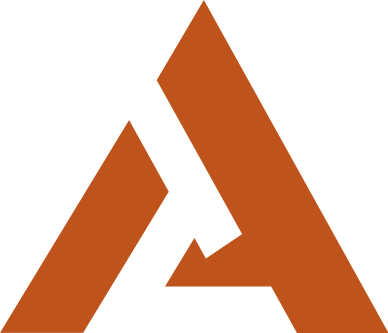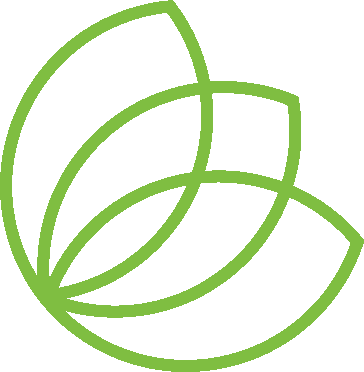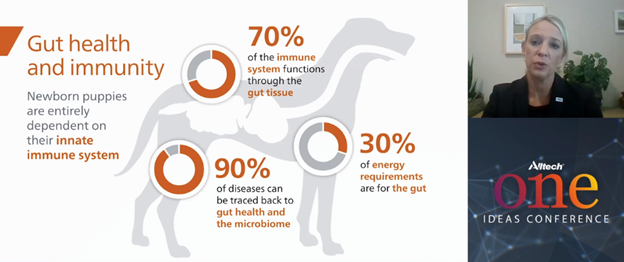HELM Agro and Alltech Crop Science are aiming to take crop yields and quality to the next level. Dave Schumacher, president of HELM Agro, and Alltech Crop Science manager Steve Borst joined Ag Future to discuss the partnership, which bridges the gap between traditional and biological crop input solutions in the U.S.
The following is an edited transcript of the Ag Future podcast episode with Dave Schumacher and Steve Borst hosted by Tom Martin. Click below to hear the full audio or listen to the episode on Apple Podcasts or Spotify.
Tom: Welcome to Ag Future, presented by Alltech. Join us as we explore the challenges and opportunities facing the global food supply chain and speak with experts working to support a planet of plenty.
I’m Tom Martin. And joining me for this edition of Ag Future are Dave Schumacher, president of HELM Agro, and Alltech Crop Science manager Steve Borst. These two entrepreneurial, family-owned businesses have formed a new partnership, and we’re going to get the details.
Welcome to Ag Future, Dave and Steve.
Dave: Thank you, Tom.
Steve: Thanks for having us.
Tom: And I’d like to get your perspectives on this partnership. Dave, let’s start with you. If you could, tell us about HELM and what it brings to the arrangement.
Dave: Sure. Well, thanks, Tom, for a chance to, to share more about our relationship.
Like Alltech, HELM is a family-owned business. And we’ve actually been in business for 121 years. So, we have a deep commitment to, to serving our customers.
Within our business, HELM Agro, we are involved in the crop protection business in the U.S. So, we provide solutions to help farmers grow better crops and (are) really helping them reach their crops’ full genetic potential.
HELM also has the fertilizer business (and) crop nutrient business in the U.S., and they’re committed to bringing crop nutrients to the market and to help farmers achieve that high yield potential.
So, we’re excited about bringing our capabilities around customers and market knowledge and our crop protection footprint and fertilizer footprints to this partnership. So, we’ll be bringing sales and marketing, as well as salespeople in the field, to support and grow the Alltech Crop Sciences portfolio.
Tom: Okay. Let’s bring you in, Steve. Same question: What is the role of Alltech Crop Science in this partnership, which I understand is unique?
Steve: Thank you, Tom. Yeah, very much so. We’re just really excited about working with Dave, the HELM team, and having the ability to bridge two companies that have the same culture, the same entrepreneurial culture, of figuring out ways to do more with less.
And I would say, from our standpoint, as Dave was mentioning, you know, what HELM brings — on the crop science side, our focus is on the innovation, technologies, and the R&D and the science behind getting these technologies through HELM to the marketplace.
So, our founder, Dr. Pearse Lyons has always — has always maintained a very entrepreneurial mindset to coming up with solutions and looking at solutions from a forward-thinking perspective. And now, his son has carried on that same mindset and really has pushed us to figure out ways to partner and to work collectively with key groups within the ag space to better service our clientele and better service our customers. So, as far as the uniqueness of this partnership — and, again, it’s a testament to the initiative that Dr. Mark Lyons had set out for us.
So, our Planet of Plenty vision of looking at ways at — looking at ways to build these partnerships and to get these types of technologies into the ag space. So, the uniqueness here is that we’re, we are — it is a strategic partnership that is going to focus on bridging agronomic or traditional agronomic solutions with the biological solution platform. Because we think both technologies offered by both companies have a space and have a position in the ag space and need to be utilized collectively together in order to achieve the genetic potential that Dave was mentioning.
So, we’re very excited about what this is going to offer our customer base and what it’s going to provide the ag sector, the agronomic sector.
Tom: The Planet of Plenty initiative revolves around sustainability. How does this new relationship between Alltech and HELM Agro apply a systems approach to support sustainable solutions?
Dave: You know, from our perspective, customers want options, and they need options to produce a crop that’s going to feed the world. So, when we look at a systems approach, there is resistance, in some cases, to some traditional crop protection products that, we think, using a systems approach of some application of Alltech Crop Science’s products in rotation or in combination with some of the traditional products can help farmers manage some of that resistance and also, you know, improve their overall yield.
I think there is certainly a push from the end consumer to have less, I’d say — less traditional chemistry is used in the practice of growing the crop. And I’m excited about the technology that Alltech Crop Science has developed.
And what we’re going to be able to do, as we start working with our customers in this portfolio, (is) to help them with those solutions. And ultimately, I think (this partnership) is a great opportunity to increase yield and increase the quality of crops while having less of, you know, herbicide, insecticide or fungicide, from a traditional standpoint, being used. So, that’s really exciting for us.
And, you know, a key part of this partnership — we couldn’t be happier about the products that they have in the pipeline and the science behind it. You know, specifically, the nutrigenomics is a very cutting-edge technology, a best-in-class technology that kind of helps really determine what that crop is going through and how we can get the best performance on the timing application. So, it’s really using science to look into what that crop is doing at a molecular level during that time of production. So, we think that that analysis will help us springboard this into a very science-driven portfolio. So, we’re very excited about it.
Tom: Steve, you have thoughts on this?
Steve: Yeah. And just to reiterate what Dave was saying, I think that the Planet of Plenty — and just maybe dovetailing into it the sustainability aspect of it, sustainability means longevity and the opportunity to really facilitate your crop life cycle and to better produce a higher-quality yield.
And so, I think, when we are talking about how sustainability fits into this partnership, as Dave was mentioning, tying both of our companies’ strengths together, from a biological and from a traditional chemistry approach, is a way for us to be able to provide a long-term solution or a long-term opportunity for our crop, as a crop input, and for our customers and our retail partners that we have around the world — and more importantly, here, with our domestic partnership here in the United States. Because everybody in our space right now — from an agronomic perspective, everybody is looking for new and innovative ways to combat the challenges that they’ve been, that have been occurring for the year-on-year cycle.
So, this is just, again, another way for us to provide more technologies and more and newer innovation to the agronomic space and to take a better stab at providing better solution, better biological solutions on-farm.
And so, combining the retail outreach that HELM has and the sales force and the marketing tools that HELM has and combining that in with the crop science innovation technology — and, as Dave mentioned, the nutrigenomics, of tying a mode of action to these biological solutions — and providing through that retail arm is just really, really exciting.
Tom: So, do I understand that this systems approach that you’re talking about, does this more or less optimize efficiency and sustainability?
Steve: Yeah. I would say it optimizes efficiency. It optimizes efficiency.
But as Dave and I both mentioned, it does provide opportunities for us to look at different ways to combat these challenges that we’re seeing. Whether we’re talking about disease pressure or the challenges with yield and producing more bushel to the acre, it does provide more opportunities and more selection for — more selections for farmers to combat those challenges, Tom.
Tom: Okay. Each partner is bringing to the table its own ongoing scientific research, as well as the development of new products. Does the partnership call for communication and collaboration in those areas?
Dave: Absolutely. You know, this a partnership, and we look (forward) to growing the product portfolios together. We’re going to be collaborating closely on new product development. I would see our R&D team and marketing teams working closely together in the upcoming few months to identify where some of those new products (and) solutions can be created.
So, you know, there’s a lot of opportunities, I think, in some of the crops that we’re looking at that we’ll be able to reach, as well as some potential combinations between a more traditional synthetic traditional crop protection product and a biological product.
So, I think there’s a lot of opportunity for collaboration and development and really pairing up the strengths of both companies to bring a solution that fits the needs of our customers.
Tom: Steve, over on your side at Alltech, do you have a bat phone on your desk for HELM? I mean, are you all staying in communication?
Steve: Oh, routinely. It’s a big, bright red phone that Dave has on his desk, and I have one on mine, that we routinely pick up. [laughs] Absolutely, Tom.
I would say, you know, a lot of the excitement that you hear from this is, as I mentioned earlier, (rooted in) the similar culture and the openness that we are both taking going into this new agreement together, with family-owned companies (that are) privately held (and that have a) global outreach, have a strong entrepreneurial mindset to both of them.
I would say, you know, it’s been an absolute pleasure — and I have to say that we, we always are continuing to find new and innovative ways and opportunities that we haven’t really thought of, as individual partners, individual companies, (to collaborate). And back to what Dave was saying there, from a partnership (perspective), you know, who better to have an idea of where to fit biological solutions in a traditional synthetic program than a traditional and synthetic company? And vice versa: Who better, alternatively, to think of some ways to put some synthetic and combination program opportunities or ideas together than, you know, a traditional chemical company and advising a biological company?
So, it’s just, it’s — we are both very much looking forward to continuing the discovery and exploring new ways for us to combine our footprints to create something very special, futuristically, for our customers.
Tom: Dave, back to you. Tell us about a couple of herbicides produced by HELM: Reviton and Katagon. I believe I’m pronouncing that correctly.
Dave: Yes, Tom. Thanks. So, Reviton and Katagon, these are two new products that we launched this year. And I’m very excited about their performance in the marketplace.
Reviton is a new active ingredient that’s registered in the U.S. (for) first time ever. So, in crop protection, new active ingredients have — there hasn’t been a whole lot of them in the past few years. So, with our partnership with other providers globally, we’ve been able to introduce that product. And it is a product that helps growers start cleaning at the beginning of the year. We call it the “burn-down market,” where we start cleaning at the beginning of the year (and doing) broadleaf and grass control. And (Reviton has a) very good safety profile compared to some other products in that market. So, we’re really excited about that.
Katagon is a post-herbicide for corn, so (it is applied) after the corn crop is up. And it does not contain glyphosate, so it could be used for growers that are not planting GMO-type corn. So, if you don’t have a glyphosate-tolerant corn, you could use Katagon for your broadleaf and grass control.
So, we’re really excited about those two markets. The Reviton, we see big increases in minimum tillage or no-till (with this product) as growers look to conserve moisture in the soil and manage soil health as best they can. Reviton has been a great solution to help them in that space, to start cleaning in the spring. Or if you have a weed problem in the fall, you can address it with that.
So, (we are) really excited about those two products and think these are a great addition to the Alltech Crop Sciences portfolio, so that we can bring total solutions to our customers.
Tom: Under this partnership, HELM is marketing, selling and distributing the Alltech Crop Science line of products. Steve, I wondered if you could tell us about that product line.
Steve: Sure. Yeah. Alltech Crop Science, our — at Alltech, our focus and our expertise is fermentation. Whether we’re talking about yeast, bacteria, fungi — I mean, our focus is providing a fermentation-type technology to the market.
And I would say the opportunity on the line, and the uniqueness of our line that we’re offering, is that we, as a biological company — a lot of the challenges that we ran into, or a lot of our customers would say (that) a lot of the challenges they ran into, were with the biological companies, (and those problems) stem from quality, shelf life and an understanding of mode of action.
And so, our focus, over the past 26 years of existence, has been to come up with these types of technologies that are more convenient for the farmer to use (and that) improve shelf life and stability, and then, ultimately, with our nutrigenomic and our research arm, (we want to) provide a mode of action or rationale to how these technologies work in the space.
And so, our lineup that we are currently offering, our standard lineup that we have — we have four pillars that we focus on. (The first is) soil. So, soil health (and) technologies to deliver to the soil. (The second pillar is) nutrition, which is (provided via) our micronutrient packs that we add amino acids to and then incorporate those technologies to improve overall uptake and efficiency from a mineral-use program.
(The third pillar is) protection, which is (going to be featured in) our future lineup that we’re excited about. So, providing technologies, like some of our research ones — though some are currently still in research — and that we’ll be deploying with PTA registration through HELM. So, biofungicides and biostimulants. And then, (the fourth pillar is) our performance line, which is our biostimulant line that is the technology delivered to provide a genetic benefit or a specific yield or quality gain.
So, all those four pillars, all of our technologies, will be offered through our HELM partnership or through HELM to our distribution channel that we currently work with.
But as I mentioned, we’re really excited about what we have in R&D and in the pipeline coming with regards to the biofungicide and the bionematicide — two key technologies that we’ll be launching through HELM, hopefully, by the end of next year.
Tom: Well, I’m glad you brought that up, Steve, because I was going to ask each of you — and I know that you can only go so far with what you can reveal (about) what’s going on in your labs — but (I am) just curious: What’s percolating there that might be of interest to our listeners that you’re excited about?
Steve: So, I can go first. I would say our — we have a technology, and the code name right now is ACS811. It is a biofungicide product that we are registering as a biofungicide, and it is used to combat fungal and bacterial pathogens. And the mode of action, how it works, is fostered around us triggering defense mechanisms in the plant to provide a systemic reaction to defend, or from a defense standpoint.
So, we’re really excited about what we’ve been able to create there from that. And also, having contained within that product is a contact reaction. So, if the disease is present, we also see a contact, where they kill stimulation that, basically, would help to combat the disease if it’s already there and present. So, it’s almost — not to use an example of where we kind of are right now within our, within society, but it’s almost like a vaccine, where you’re putting this on a plant, and it’s triggering a defense mechanism to help to defend itself against an impending attack.
So, we’re really excited about that technology. And then, the other one is a bionematicide that we currently are in the process of registration in both Brazil and, currently, here domestically, in the U.S., that we will be launching through HELM. And that is (targeting) nematode problems, a very serious problem that usually requires very serious and toxic chemistries in order to combat. And we will be providing a safe, biological-derived technology to combat those challenges, that challenge, for our customers as well.
So, they will be the two key ones that we have under (development) in the safe right now, Tom, but we are really, really excited and focused on getting (these solutions) deployed out through HELM as soon as possible.
Tom: Well, Dave, I want to give you that question as well, but before we get there, I just want to say that that sounds pretty revolutionary to this layman’s ear. It sounds as though what you’re doing is fortifying the plant’s ability to defend itself versus applying some external chemical or toxin to do the same thing. Is that a correct assessment?
Dave: Yeah, I think you’re absolutely right. With the biological approach, it’s really working with the plant to enhance its defense mechanism. The product that Steve was referencing, ACS811, we’re really excited about that product and the opportunities that these products will have in the marketplace. We can see a lot of applications to that in either row crop or specialty crops as well.
One of the challenges with disease pressure is it’s ever-changing, and Mother Nature always wins. So, Mother Nature will build resistance to some of the products being used. And this gives us a great opportunity to address them, those challenges that growers have, with a different mode of action that can make a healthier plant.
So, we’re excited about, you know, being able to bring new solutions to growers and retailers to help out in that space. So, it is an exciting, exciting venture. And a lot of what we’ve seen with other biologicals are they don’t work as consistently as what we’re seeing with the Alltech Crop Science portfolio. And I think that attributes to, you know, the rigor around science and product development but also the manufacturing capability (at Alltech Crop Science). It’s not easy to manage that fermentation and produce through fermentation, and Alltech Crop Science and Alltech are experts in that space.
So, that’s going to help us, I think, break through dark water, if you will — (and by that I mean) some of the biologicals that are out there — and really bring that consistency and science-based approach, along with the proof points of, like, nutrigenomics that we can show (producers that) it actually is enhancing that plant’s defense mechanism.
So, we’re really excited about this technology and what it can provide for our customers for the future.
Tom: Earlier in the conversation, we touched on the Planet of Plenty initiative at Alltech. And to wrap things up, I’d like to ask each of you to tell us how the Planet of Plenty initiative figures into what you do into your work. How about you, Steve?
Steve: Perfect. I would say, from the initiative, as I mentioned, that Mark has really set forward for us to use as our focus, from a crop science standpoint, I would say what this partnership has really touched on is, as we mentioned, the sustainability aspect of the relationship and what each company is trying to deliver from a solution standpoint — but more importantly, (in relation to our) partnership.
The ability for us to work collectively together — and the idea was to benefit from each other’s strengths and to combat some of, maybe, the weaknesses that we might have been looking to come up with solutions for (as) an individual (company) that (we) now have the opportunity to be a bit of a stronger force in the space (by working together). I think that would be where I would say this really ties into that overall message that Dr. Mark Lyons has set forth for us all from an Alltech standpoint.
Tom: Okay. And Dave, your perspective on that?
Dave: Yeah. I think, you know, as we look at this partnership, it’s going to provide us with the opportunity to provide more solutions to growers.
Currently, you know, this will be a new venture into the soil health piece, and that’s been an area that’s very much growing. And we’re excited to be a part of it, because we’re seeing, you know, a lot of development in that area. And being able to grow a sustainable crop really starts with your soil and the nutrition in your soil, as well as the right bugs that are converting organic material into food for the plants. And the Alltech Crop Sciences portfolio has some great opportunities to do that.
And also, with the Reviton product, you know, that’s going to continue to support minimum or even increasing to till acres, which will be good in that as people think about growing a more sustainable crop.
You know, the other thing I wanted to add is, overall, HELM is moving in this way and other parts of the business as well. On our industrial business, we just announced a joint venture with Cargill Green to build a plant in Iowa that will make input products for plastic to make sustainable plastics out of corn — so versus out of a petroleum-based or an oil-based input.
So, we’re really excited about that as well and our commitment to agriculture and how we can help use the land, to be good stewards of the land with our customers. So, we’re really excited about it.
Tom: All right. Dave Schumacher, president of HELM Agro. Alltech Crop Science manager Steve Borst. Thank you both for joining us.
Dave: Thank you, Tom.
Steve: Thanks, Tom.
Tom: I’m Tom Martin, and thank you for listening. This has been Ag Future, presented by Alltech. Be sure to subscribe to Ag Future wherever you listen to podcasts.







































